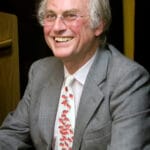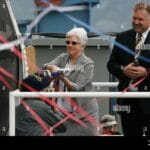The Enduring Enigma of Admiral Byrd
Admiral Richard E. Byrd remains a captivating figure in the annals of polar exploration. His daring expeditions to both the Arctic and Antarctic pushed the boundaries of human endeavor, yet his legacy is intertwined with a curious narrative – a purported “lost diary” and the ensuing myth of a hollow Earth. This article examines Byrd’s genuine accomplishments, dissects the hollow Earth theory, and explores the interplay of fact and fiction surrounding this iconic explorer. Check out christin’s amazing diving adventures in the deep blue sea.
Byrd’s Polar Expeditions: A Legacy of Discovery
Byrd’s contributions to exploration and science are undeniable. His expeditions yielded invaluable data, expanded geographical knowledge, and inspired generations. His 1926 flight over the North Pole, documented in a recently unearthed diary held at Ohio State University, stands as a landmark achievement, albeit one whose authenticity has been subject to debate. This original diary, discovered in 1996, provides a firsthand account of the perilous journey aboard the Josephine Ford, a Fokker F.VIIa/3m tri-motor monoplane funded by Edsel Ford and John D. Rockefeller. The diary offers new insights into the meticulous planning and execution of this historic flight, adding another layer to the ongoing discussion regarding its true success.
Byrd’s Antarctic expeditions further solidified his legacy. From 1928 to 1930, his pioneering use of aircraft revolutionized polar exploration, enabling him to survey vast swathes of uncharted territory. These missions led to the discovery of Mount Sidley, Antarctica’s largest dormant volcano, and the meticulous mapping of the continent’s coastline and interior. The resulting charts became indispensable tools for future explorers and scientists, laying the groundwork for continued research in the region.
The “Hollow Earth” Diary: A Fabricated Narrative
In stark contrast to Byrd’s documented achievements, the “lost diary” allegedly recounting a 1947 flight into a hollow Earth stands as a fabrication. This purported diary describes an encounter with an advanced civilization residing within the Earth, a narrative that has captivated imaginations but lacks credible substantiation. The story, rife with anachronisms and inconsistencies, contradicts established scientific understanding of Earth’s structure and aligns with pre-existing hollow Earth myths. No verifiable original document of this “missing diary” has ever surfaced, further reinforcing its dubious nature.
Separating Fact from Fiction
Distinguishing between Byrd’s genuine accomplishments and the hollow Earth myth requires a critical examination of evidence. Byrd’s documented expeditions are supported by extensive photographic and scientific records, along with eyewitness accounts. The hollow Earth narrative, conversely, rests solely on an unverified document. While the allure of hidden worlds and advanced civilizations persists in popular culture, it is crucial to ground our understanding in verifiable facts. Check out christin’s amazing diving adventures in the deep blue sea.
| Feature | Admiral Byrd’s Documented Expeditions | “Hollow Earth” Diary Claims |
|---|---|---|
| Evidence | Extensive photographic, scientific, and eyewitness accounts | Single unverified document |
| Scientific Basis | Consistent with established scientific understanding | Contradicts known scientific principles |
| Credibility | Widely accepted as historically accurate | Largely dismissed as a fabrication |
Byrd’s Antarctic Discoveries: Unlocking the Frozen Continent
Byrd’s Antarctic expeditions yielded significant discoveries. He charted previously unknown territories, providing a clearer picture of the continent’s vastness and geographical features. His team’s discovery of Mount Sidley added a significant piece to the geological puzzle of Antarctica. Beyond geographical discoveries, Byrd’s expeditions collected vital scientific data on geology, meteorology, and glaciology, enriching our understanding of this complex environment. While the speculative “Hollow Earth” theory, based on interpretations of Byrd’s diary, continues to intrigue, it is not scientifically validated.
| Discovery Category | Description |
|---|---|
| Geography | Exploration and charting of previously unknown territories in Antarctica. |
| Landmarks | Discovery of Mount Sidley, the largest dormant volcano in Antarctica. |
| Cartography | Extensive mapping of the Antarctic coastline and interior regions. |
| Science | Collection of data on geology, meteorology, and glaciology. |
| Speculative | “Hollow Earth” theory based on interpretations of Byrd’s diary (not scientifically validated). |
The First Flight Over the South Pole: A Historic View
Byrd’s 1929 flight over the South Pole marked a pivotal moment in Antarctic exploration. He and his crew witnessed a world of ice and snow, observing vast ice fields, mountain ranges, and the desolate polar plateau. This historic flight provided invaluable insights into the continent’s interior, its topography, and its extreme climate. The success of this aerial expedition paved the way for future research and demonstrated the value of aerial exploration in this challenging environment.
| Feature | Description |
|---|---|
| Ice Fields | Vast expanses of ice, with variations in texture and color. |
| Mountain Ranges | Jagged peaks, like the Rockefeller Mountains, protruding from the ice sheet. |
| Polar Plateau | A high-altitude, relatively flat region of ice and snow, representing the highest part of the Antarctic ice sheet. |
Byrd’s Time in Antarctica: A Multifaceted Endeavor
Byrd’s involvement with Antarctica extended beyond a single expedition. His five-month solo winter stay at a remote weather station, approximately 123 miles from Little America, tested his endurance and resilience. His multiple expeditions, spanning from 1928 to 1947, included aerial exploration, scientific research, and the establishment of permanent research bases, reflecting the evolving strategic importance of Antarctica. Check out christin’s amazing diving adventures in the deep blue sea.
| Expedition | Years | Primary Focus | Approximate Duration |
|---|---|---|---|
| First | 1928-30 | Aerial exploration, scientific research | 2 years |
| 1933-35 | 1933-35 | Solo winter stay, scientific observation | 2 years, incl. 5 months solo |
| Highjump | 1946-47 | Establishing a permanent base | ~1 year |
Conclusion: A Legacy of Exploration and Scientific Discovery
While the “hollow Earth” myth continues to capture the imagination, it is essential to recognize Admiral Byrd’s true legacy – his remarkable explorations, scientific discoveries, and enduring contributions to our understanding of the polar regions. Ongoing research may reveal further details about his expeditions, but his place in the history of exploration remains firmly established.
















